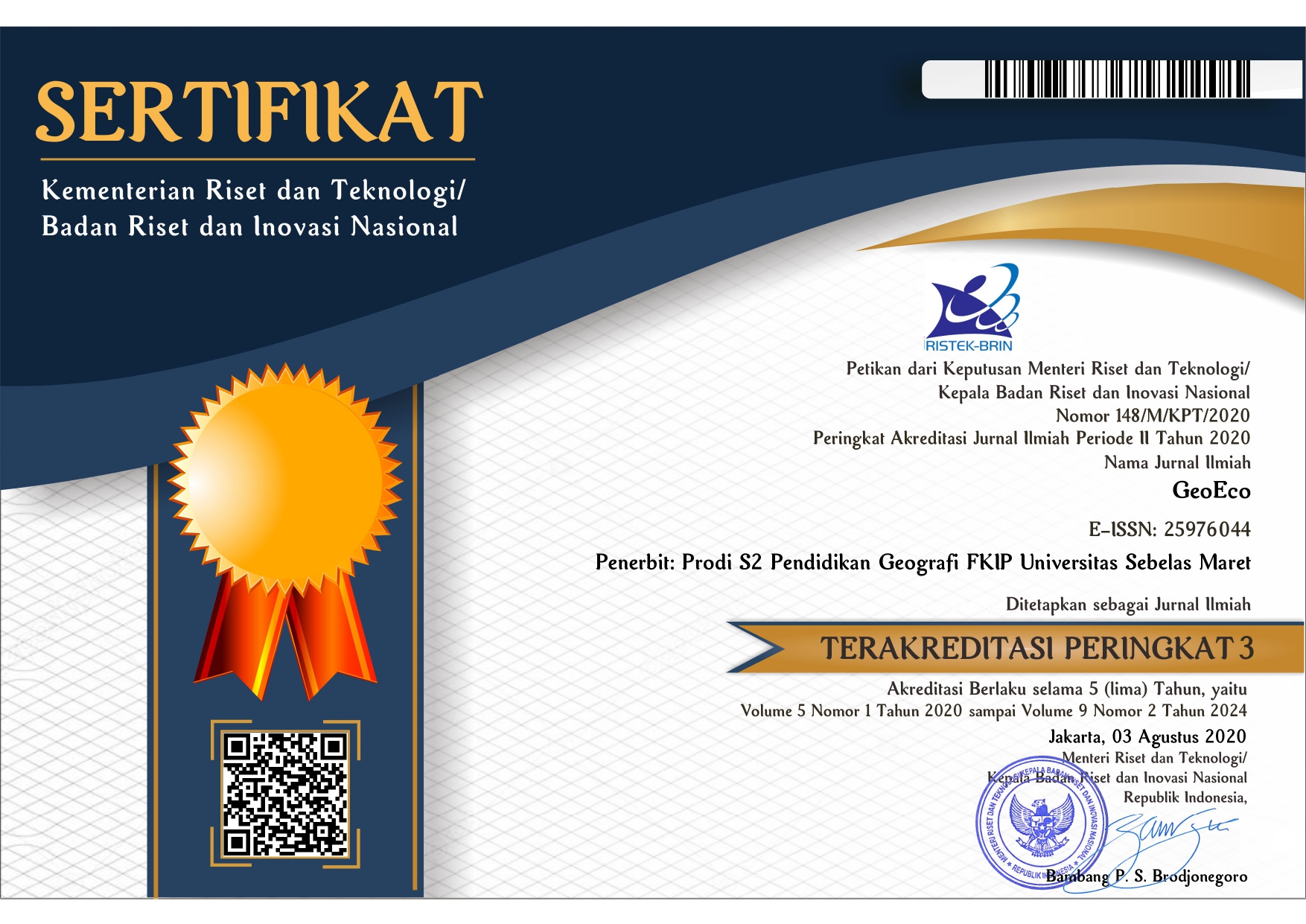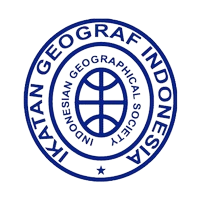ANALYSIS OF MATERIAL LOSS DUE TO FLOOD DISASTER IN THE SUB-DISTRICT OF SILAT HULU, KAPUAS HULU REGENCY
Abstract
A flood is a frequent disaster during the rainy season and causes many losses, good materials, treasure objects, and casualties. The study aims to know the loss of materials caused by disasters that flood Bandang in the Silat Hulu Sub-district. The method of research used is descriptive quantitative. Collected data is secondary data, including damaged buildings, facilities and infrastructure, and land. The method analysis used is descriptive. The study results show that The Silat Hulu Sub-district experienced twice the floods successively. The first occurred on 18-19 October 2021 and 22-23 October 2021. A total of 11 villages of 14 villages experience a flood. Consequently, the flood and loss of materials, including dozens of house inhabitants of Village Selangkai and Entebi, were damaged, collapsed, and swept away. A total of 1,813 families were evacuated, and the total loss consequence flood around Rp. 20,000,000.00-30,000,000.00.
Keywords
Full Text:
PDFReferences
Batu, Juliana Andretha Janet Lumban, dan Charitas Fibriani. 2017. “Analisis penentuan lokasi evakuasi bencana banjir dengan pemanfaatan sistem informasi geografis dan metode simple additive weighting.” Jurnal Teknologi Informasi dan Ilmu Komputer (JTIIK) p-ISSN 2355:7699.
Gumilar, I. 2013. “Pemetaan Karakteristik Penurunan Muka Tanah (Land Subsidence) Berdasarkan Pengamatan Metode Geodetik Serta Estimasi Kerugian Ekonomi Akibat Dampak Penurunan Muka Tanah (Wilayah Studi: Cekungan Bandung).” Disertasi Program Doktor. Institut Teknologi Bandung.
Jongejan, R. B., dan B. Maaskant. 2015. “Quantifying flood risks in the Netherlands.” Risk Analysis 35(2):252–64.
Ka’u, Anggrayni Aghnesya, Esli D. Takumansang, dan Amanda Sembel. 2021. “Analisis Tingkat Kerawanan Banjir Di Kecamatan Sangtombolang Kabupaten Bolaang Mongondow.” Spasial 8(3):291–302.
Kadri, Trihono. 2007. “Penerapan Sistem Informasi Geografis Dalam untuk Mereduksi Kerugian Akibat Banjir.” in Seminar Nasional Aplikasi Teknologi Informasi (SNATI).
Luu, Chinh, Jason von Meding, dan Mohammad Mojtahedi. 2019. “Analyzing Vietnam’s national disaster loss database for flood risk assessment using multiple linear regression-TOPSIS.” International Journal of Disaster Risk Reduction 40:101153.
Majni, Ferdian Ananda. 2021. “47 Desa Terdampak Banjir Kapuas Hulu di Kalimantan Barat.” Diambil (https://mediaindonesia.com/humaniora/419030/47-desa-terdampak-banjir-kapuas-hulu-di-kalimantan-barat).
Purwanto, A., Andrasmoro, D., Eviliyanto. 2022. Analsis of Flood Vulnerability Using Remote Sensing and GIS in Silat Hulu Sub-District.
Sesunan, Dirwansyah. 2014. “Analisis kerugian akibat banjir di Bandar Lampung.” Jurnal Teknik Sipil 5(1).
Setiawan, Yudi, Endina Putri Purwandari, Andang Wijanarko, dan Etis Sunandi. 2020. “Pemetaan Zonasi Rawan Banjir Dengan Analisis Indeks Rawan Banjir Menggunakan Metode Fuzzy Simple Adaptive Weighting.” Pseudocode 7(1):78–87.
Sholihah, Qomariyatus, Wahyudi Kuncoro, Sri Wahyuni, Sisilia Puni Suwandi, dan Elisa Dwi Feditasari. 2020. “The analysis of the causes of flood disasters and their impacts in the perspective of environmental law.” Hal. 12056 in IOP conference series: earth and environmental science. Vol. 437. IOP Publishing.
Somantri, Lili. 2008. “Pemanfaatan Teknik Penginderaan Jauh untuk Mengidentifikasi Kerentanan dan Risiko Banjir.” Jurnal Geografi Gea 8(2).
Supriyono, Primus. 2014. “Seri pendidikan pengurangan risiko bencana banjir.” Yogyakarta. Andi Offset.
Tanoue, Masahiro, Yukiko Hirabayashi, dan Hiroaki Ikeuchi. 2016. “Global-scale river flood vulnerability in the last 50 years.” Scientific reports 6(1):1–9.
UNISDR, U. 2015. “Sendai framework for disaster risk reduction 2015–2030.” in Proceedings of the 3rd United Nations World Conference on DRR, Sendai, Japan. Vol. 1.
Refbacks
- There are currently no refbacks.












.png)

